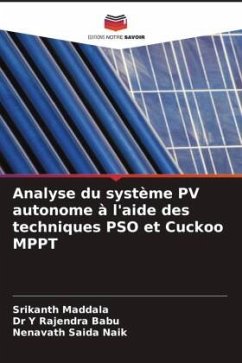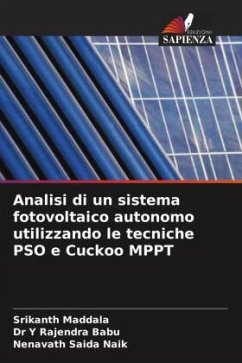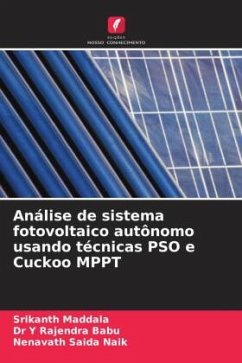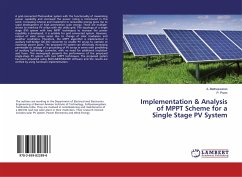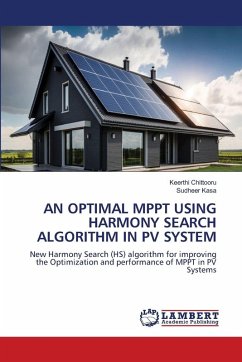
ANALYSIS OF STANDALONE PV SYSTEM USING PSO & CUCKOO MPPT TECHNIQUES
Versandkostenfrei!
Versandfertig in 6-10 Tagen
40,99 €
inkl. MwSt.

PAYBACK Punkte
20 °P sammeln!
The photovoltaic(PV) panel's characteristic is non-linear and highly depended on solar irradiation and temperature cell variations. For that reason, a Maximum Power Point Tracking (MPPT) algorithm is essential so that it is possible to draw peak power from the photovoltaic panel to obtain the maximized produced energy. The main purpose of MPPT technique is to make sure that the solar panel is producing the maximum power. This extracts the maximum amount of power at any given time. This paper proposes a concept of a different MPPT techniques for boost converter for improving the performance of ...
The photovoltaic(PV) panel's characteristic is non-linear and highly depended on solar irradiation and temperature cell variations. For that reason, a Maximum Power Point Tracking (MPPT) algorithm is essential so that it is possible to draw peak power from the photovoltaic panel to obtain the maximized produced energy. The main purpose of MPPT technique is to make sure that the solar panel is producing the maximum power. This extracts the maximum amount of power at any given time. This paper proposes a concept of a different MPPT techniques for boost converter for improving the performance of PV system in terms of efficiency and power from the PV system. Basically, boost converter is proposed as interface between load and PV module array as DC-DC converter for voltage improvements. Also, a Particle Swarm Optimization(PSO) and Cuckoo Search is proposed in this paper for further improvement of PV power. The MATLAB/SIMULINK power system tool box will be used to stimulate the proposed system.



